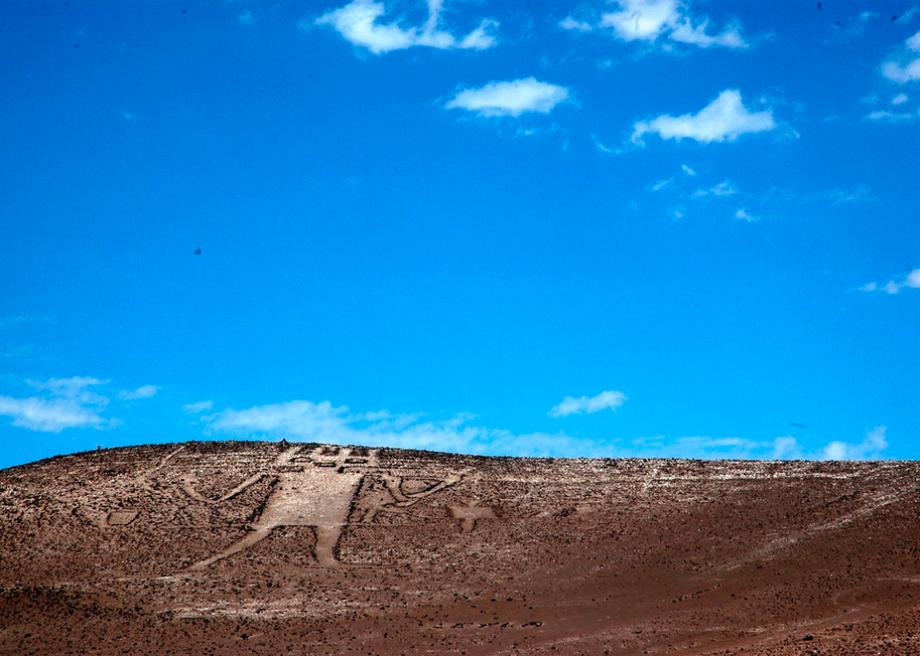Chile’s Atacama Giant

Photo: Emelio/Creative Commons
Atlas Obscura on Slate is a blog about the world’s hidden wonders. Like us on Facebook and Tumblr, or follow us on Twitter.
Illustrated on a Chilean hillside known as Cerro Unitas and surrounded by thousands of smaller geoglyphs, the Atacama Giant, a massive image of a deity used to calculate the movements of the moon, stands as the largest geoglyph ever discovered.
Likely created sometime between 1000 and 1400 A.D. by a successive series of indigenous cultures including the Inca, the massive figure rests among about 5,000 smaller images of birds, mystical designs, and other images that have been etched on the ground. The images were created by either digging out the lines of the design from the soil, or by placing patterns of stones and sand on top of it, and sometimes a mixture of the two methods. (Successive cultures worked to create the images, which accounts for the variation.)
The giant itself is 390 feet tall and built in a direct and unpretentious design with no flourishes, save for the straight lines emanating from its head and torso to imitate either some sort of ceremonial garb or the unearthly features of a god. Whichever the lines symbolize, researchers have determined that they very likely served a practical purpose as well. When they aligned with the moon, the lines in the giant's headdress, in conjunction with the other points on its body, the image would have been used to track the time of year so that the ancient builders could predict the coming of the crucial rainy season.
While the Atacama Giant may not be the most famous geoglyph in the game (that distinction goes to the Nazca Lines), the size, clarity, and former importance of the rain god to the people who made the design allow it to stand tall regardless.
More wonders to explore:
